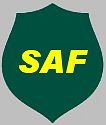
FOREST MANAGEMENT
GUIDELINES FOR MICHIGAN
By the Michigan Society of American Foresters
 INTRODUCTION
INTRODUCTION
Michigan forests have always been important to the quality of life of Michigan citizens. But our demands on forests continue to grow and to change. To maintain our quality of life, the way we manage our forests will also change. The Michigan Society of American Foresters offers this publication of forest management guidelines for both professional foresters and landowners to assist in the management of our forest resource.
The forest management guidelines recognize the renewable nature of forests and the influence of forest management practices on the many uses of the forest including water, recreation, wildlife, timber, and aesthetics. Because of the diversity of forest conditions, values, and ownerships, no set of management guidelines can cover all situations. Professional and landowner judgment must combine scientific knowledge with these guidelines to determine management practices for a particular property.
The goal of these guidelines is to provide for conservation and stewardship of all forest lands in Michigan. The Michigan Society of American foresters challenges landowners, forest managers, forest industries, and timber harvesting contractors to follow these guidelines. They provide a common sense approach to better manage the forest lands of the state.
Characteristics of Michigan's
Forests
Contributions of Michigan's Forests
The Guidelines
The Forest Plan
Silvicultural Systems
Regeneration and Reforestation
Harvesting Methods
Forest Protection
Forest Health
Wildlife Habitat
Scenic and Recreation Values
Special Natural and Cultural
Resources
Road Construction and Maintentance
Postscript
MANAGEMENT GUIDELINES: APPLICABLE TO PUBLIC AND PRIVATE LANDS
It is possible and useful to define a set of general guidelines that, if interpreted and applied intelligently and in good faith, can help design and evaluate specific forest management practices in specific settings. These guidelines are offered to do just that.
These guidelines are written to apply to all forest land ownerships in Michigan. They define a set of considerations that, when taken as a whole, constitute a framework of advice, encouragement, and obligation appropriate for the time and place for which they are written.
The guidelines represent neither a minimum set of requirements that applies in all situations, nor a guarantee that, if applied, all important considerations and obligations will be met. They are not intended as a complete forest management instruction manual for foresters, landowners, or the public.
Therefore, these guidelines must be supplemented with a knowledge of local conditions, a familiarity with forest ecology and management, a recognition of the objectives and constraints of individual landowners, and compliance with all applicable laws and regulations. To ensure that these factors are carefully weighed, the advice of trained, experienced, and thoughtful professional foresters and other resource managers is available and should be sought and considered.
| State
Forest owners and managers should be aware of cumulative impacts on rare
species and communities. These accrue over time. Individually the loss may
seem small, but over time and throughout its range, small losses of a species
or community can add up to a significant impact.
Examples of cultural resources include archaeological sites or places where remnants of past human activity exist in the soil. These sites contain important information, and sometimes artifacts, of prior human activity and cultures. Vegetation cutting, road building, stump pulling, and soil disturbing of any kind should be avoided in these suspected sensitive areas until consultation is made with competent individuals trained in recognizing the special characteristics associated with special natural or archaeological sites. Owners and managers of forest land believing to have special natural resources are encouraged to contact the Michigan Natural Features Inventory at 517-373-1552 to discuss their resources and management options. Those suspecting cultural resources on their land should consult with the Office of the Archaeologist at 517-373-6416. |
The Michigan Society of American Foresters (MISAF) represents approximately 600 professional land and resource managers within the State of Michigan. The Society's objectives are to advance the science, technology, education, and practice of forestry in Michigan and in the nation and to use the knowledge and skills of the profession to benefit the public. Our stated mission is responsible stewardship of Michigan forests while meeting critical needs of society.
The proper management of forest lands deals with a wide array of complexities and has long-term effects. An error in judgment or prescription can affect stand conditions, composition, and associated resources for decades. Therefore, the Michigan Society of American Foresters urges forest landowners to avail themselves of the many sources of expert assistance or advice available from several sources in order to manage those stands in a professional and socially acceptable manner. Those sources include:
County Extension Director or Forester
County Conservation District County Resource Professional
Natural Resource Conservation Service
Michigan Department of Natural Resources
Michigan Department of Agriculture
Michigan Natural Features Inventory
U.S. Forest Service
Consulting Foresters
Industrial Foresters
Michigan Forest Association
Consulting Wildlife Biologists

This website is maintained by Bill Cook, Michigan State University Extension
Forest in the Upper Peninsula. Comments, questions,
and suggestions are gratefully accepted.
Last update of this page was 8 May, 2008
This site is hosted by School of Forest Resources and Environmental Science at Michigan Technological University.